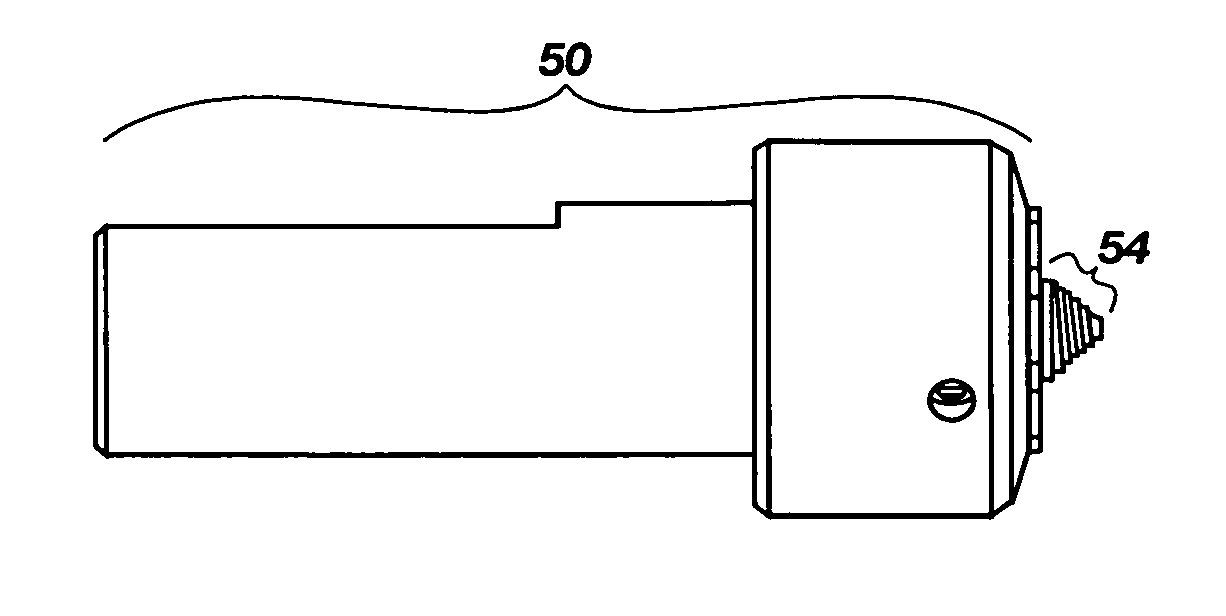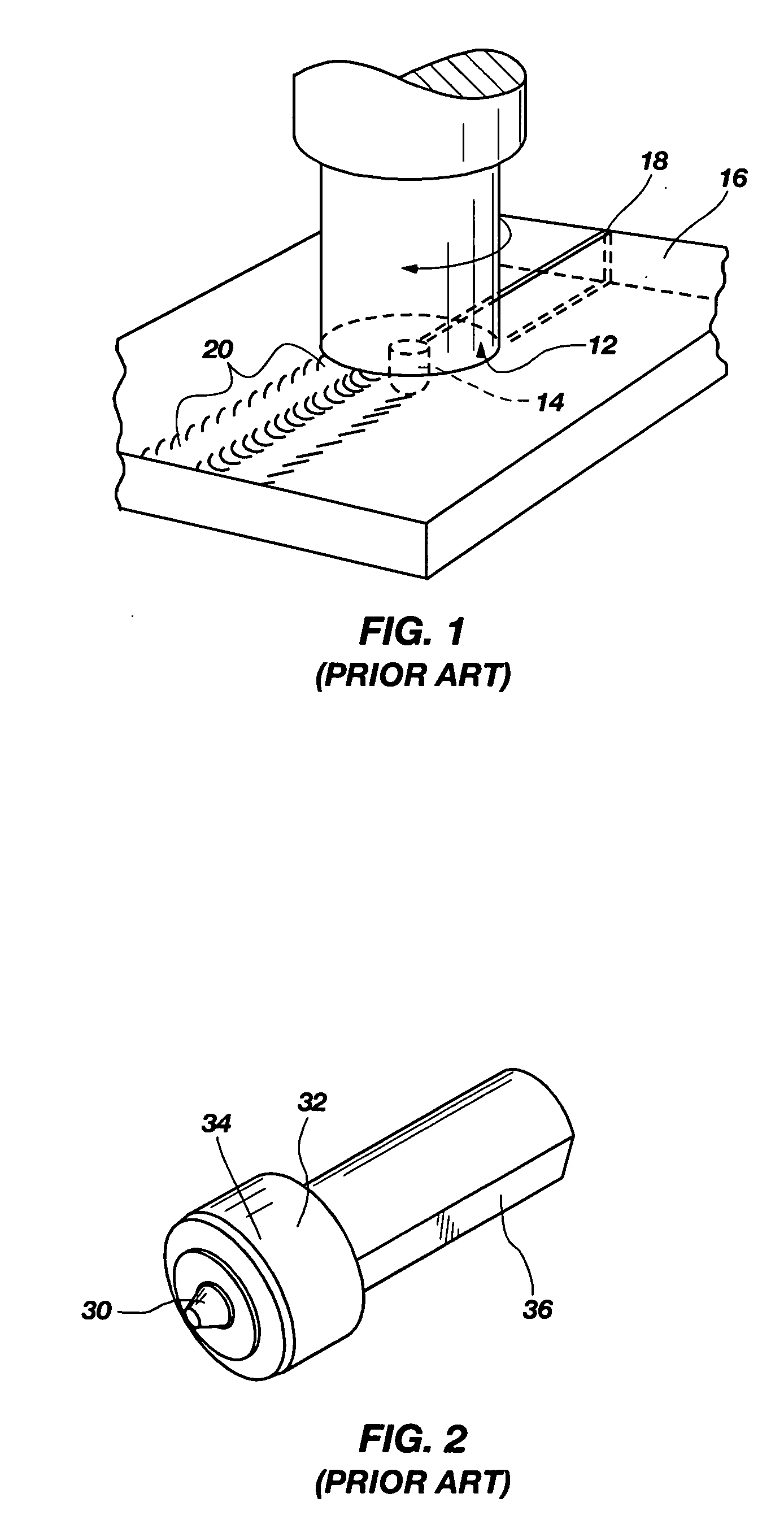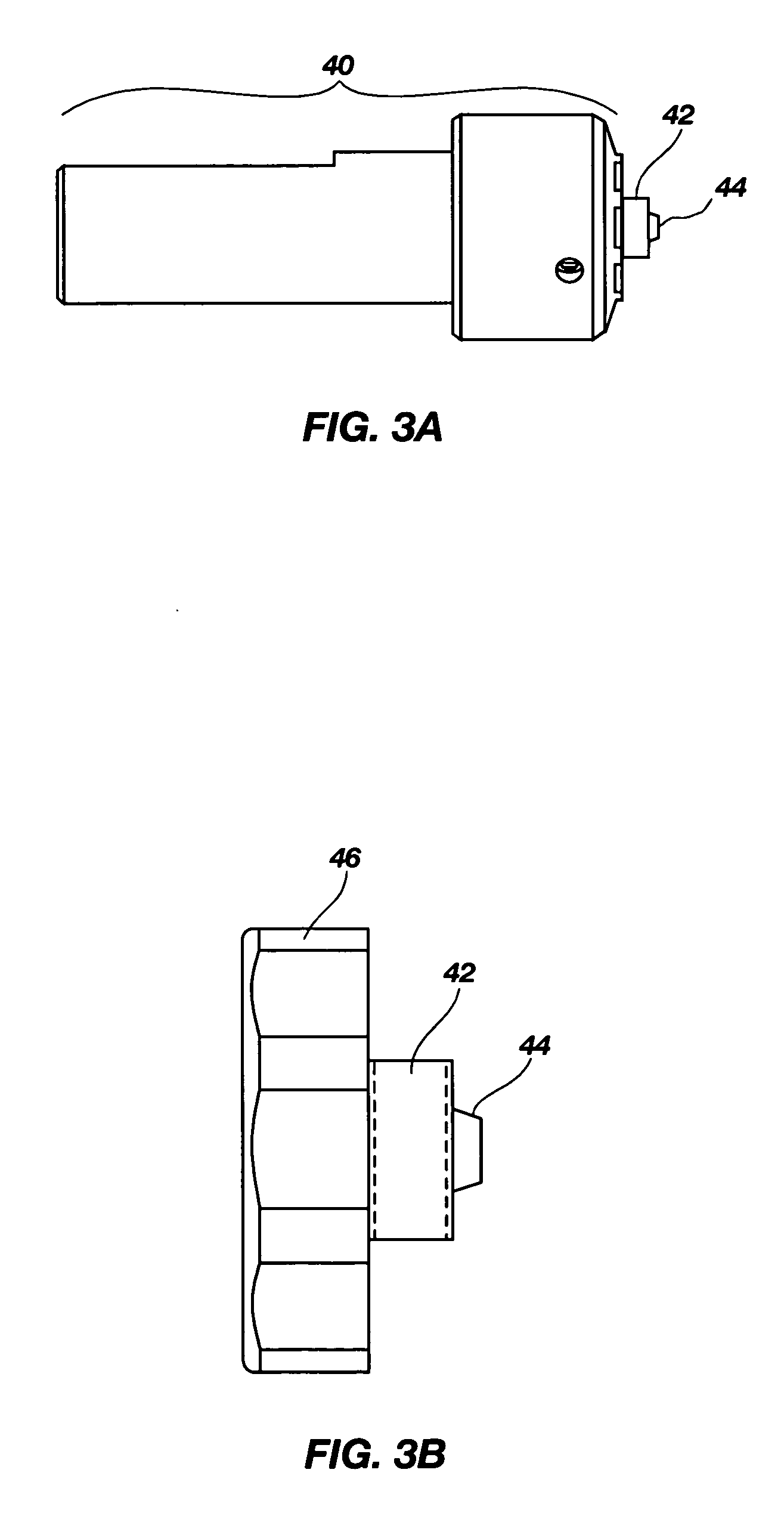Tool geometries for friction stir spot welding of high melting temperature alloys
a high melting temperature alloy and tool geometrie technology, applied in the direction of manufacturing tools, soldering devices, auxillary welding devices, etc., can solve the problems of high energy cost, hazardous fumes, rsw technology, etc., and achieve the effect of enabling fssw of high melting temperature materials and enhancing mixing of high temperature materials
- Summary
- Abstract
- Description
- Claims
- Application Information
AI Technical Summary
Benefits of technology
Problems solved by technology
Method used
Image
Examples
Embodiment Construction
[0045] Reference will now be made to the drawings in which the various elements of the present invention will be given numerical designations and in which the invention will be discussed so as to enable one skilled in the art to make and use the invention. It is to be understood that the following description is only exemplary of the principles of the present invention, and should not be viewed as narrowing the claims which follow.
[0046] From recent developments with tool materials such as Polycrystalline Cubic Boron Nitride (PCBN) and other materials which have a higher melting point than those materials being joined, friction stir welding (FSW) of high melting temperature materials has become a reality. However, in recent FSSW tests, it has become apparent that the tool geometries used for FSSW are going to be different from those used in FSW. Changes in tool geometry include, but should not be considered limited to, pin length, modifying the pin length to shoulder width ratio, t...
PUM
| Property | Measurement | Unit |
|---|---|---|
| Travel speeds | aaaaa | aaaaa |
| cycle time | aaaaa | aaaaa |
| cycle time | aaaaa | aaaaa |
Abstract
Description
Claims
Application Information
 Login to View More
Login to View More - R&D
- Intellectual Property
- Life Sciences
- Materials
- Tech Scout
- Unparalleled Data Quality
- Higher Quality Content
- 60% Fewer Hallucinations
Browse by: Latest US Patents, China's latest patents, Technical Efficacy Thesaurus, Application Domain, Technology Topic, Popular Technical Reports.
© 2025 PatSnap. All rights reserved.Legal|Privacy policy|Modern Slavery Act Transparency Statement|Sitemap|About US| Contact US: help@patsnap.com



